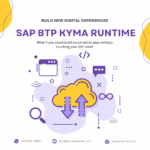As enterprises transition from SAP PI/PO to SAP Integration Suite, one significant challenge is migrating Java mappings developed in SAP PO. Many organizations have complex Java code with little to no documentation or knowledge to redesign them effectively.
This blog provides a streamlined approach to migrate Java mappings from SAP PO to SAP Integration Suite using best practices. It also highlights a method to migrate Java logic into Groovy with minimal coding effort, even when the Java logic is intricate or unclear.
Scope of This Guide
This guide does not cover migrating Java mappings involving XSLT mappings, web service lookups, dynamic configurations, value mapping lookups, or attachments, as these require advanced manual adjustments and Java expertise. However, it provides a framework for the migration process, which you can adapt based on specific requirements.
Steps to Migrate Java Mapping from SAP PO to SAP CPI
Step 1: Extract Java Files from SAP PO
- Download all the Java files linked to your Java mapping from SAP PI/PO.
- Include any related
.jarfiles and additional class files.
Step 2: Rename Java Files for Groovy
Rename the .java files to .groovy. Ensure the filename matches the class name. For example, if the class name is public class Utility, rename the file to Utility.groovy.
Step 3: Update Package Declaration
- Add the line
package src.main.resources.script;as the first line in each file. - Remove any existing
packagedeclarations.
Step 4: Modify the Main Java Mapping Class
Locate the main Java mapping class containing the method public void transform. This is the starting point for the mapping logic. Perform the following updates:
- Remove
throws StreamTransformationException: Exclude this from thetransformmethod declaration. - Remove
@OverrideAnnotation: Delete the annotation above thetransformmethod. - Exclude Inheritance: Remove any inheritance code like
extends AbstractTransformation. - Delete Main Method: Remove any main method (
public static void main(String[] args) {…}) and its contents.
Save the main class file, as this will be called by the Groovy wrapper created later.
Step 5: Establish Linkages Between Groovy Files
If there are multiple interlinked Java files, establish dependencies using import statements. For example:
- In
MainClass.groovy:groovyCopy codeimport src.main.resources.script.Utility; import src.main.resources.script.Common; - Repeat for other files (
Utility.groovy,Common.groovy) as needed.
Step 6: Make Basic Java-to-Groovy Adjustments
Update the Java code to conform to Groovy syntax:
- Remove Trace Logging Code: Replace SAP PO trace logs with custom error handling:groovyCopy code
throw new RuntimeException("Error message");Use custom headers for monitoring logs:groovyCopy codedef messageLog = messageLogFactory.getMessageLog(message); messageLog.addCustomHeaderProperty("<Log Name>", "<Log details>"); - Change Array Declarations: Update
String array[]toString[] array. - Replace Double Quotes: Use single quotes for static strings. For example:groovyCopy code
String str = 'Hello, World!'; - Use UTC Timezone: Ensure all date/time variables align with the UTC timezone for consistency with SAP Integration Suite.
Step 7: Upload Groovy Files to SAP CPI
Compress the updated .groovy files and .jar files (if any) into an archive and upload them to the SAP Integration Suite.
Step 8: Create a Main Groovy Wrapper
Create a Groovy script to call the migrated mapping logic. Below is a sample template:
groovyCopy codeimport src.main.resources.script.<MainClass>;
import com.sap.gateway.ip.core.customdev.util.Message;
import java.util.HashMap;
import java.io.ByteArrayInputStream;
import java.io.ByteArrayOutputStream;
import java.io.InputStream;
import java.io.OutputStream;
def Message processData(Message message) {
// Initialize input and output streams
InputStream ins = null;
OutputStream outs = new ByteArrayOutputStream();
// Get the message body
def body = message.getBody(String);
ins = new ByteArrayInputStream(body.getBytes());
// Create an instance of the main class and call the transform method
<MainClass> mc = new <MainClass>();
mc.transform(ins, outs);
// Retrieve and set the output body
String body_out = new String(outs.toByteArray());
message.setBody(body_out);
return message;
}
Replace <MainClass> with the name of the primary class.
Special Considerations
If the Java mapping involves web service lookups or attachments, pass them as extra parameters to the transform method and adapt the Groovy logic accordingly. This requires intermediate Groovy or Java skills.
Conclusion
Migrating Java mappings from SAP PO to SAP CPI/Integration Suite involves several steps but can be simplified by understanding and systematically adapting the logic to Groovy. Following the outlined best practices ensures a smooth transition, enabling you to leverage the powerful capabilities of SAP Integration Suite.
Got questions or additional tips? Share them in the comments below! 🚀











